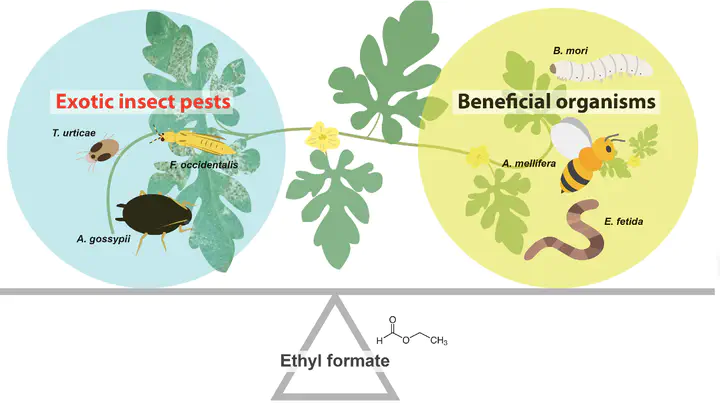Development of Ethyl Formate Disinfestation Treatment Methods for the Prevention of the Introduction and Establishment of Exotic Insect Pests in Greenhouse Cultivation

Abstract
Globalization has increased international trade and caused an annual increase in the number of non-native insect pest species found in quarantine sites in Korea. Since over 80% of Korean farms use greenhouses with internal conditions conducive to growing crops and hospitable to exotic pests, efficient pest control is crucial. This study evaluated the efficacy of ethyl formate (EF) against three major exotic insect pests (Aphis gossypii, Frankliniella occidentalis, and Tetranychus urticae) and beneficial organisms (earthworms, honeybees, and silkworms) via EF fumigation experiments at two concentrations. The lethal concentration–time (LCt)99 values of A. gossypii, F. occidentalis, and T. urticae were 8.96, 14.00, and 19.07 g h/m3, respectively. Four hours of fumigation of EF at 15 g/m3 left no residue on the crops or soil after a maximum of 3 h. The beneficial organisms exhibited higher tolerance levels than A. gossypii with regard to LCt99 value, but the higher EF treatment dosage needed to control F. occidentalis and T. urticae could be highly lethal to honeybees. The lower EF dose (4 g/m3) effectively controlled A. gossypii, but 15 g/m3 was needed for F. occidentalis and T. urticae. Phytotoxicity varied in severity with EF concentration. These insights can help in developing a refined disinfestation strategy for greenhouses.